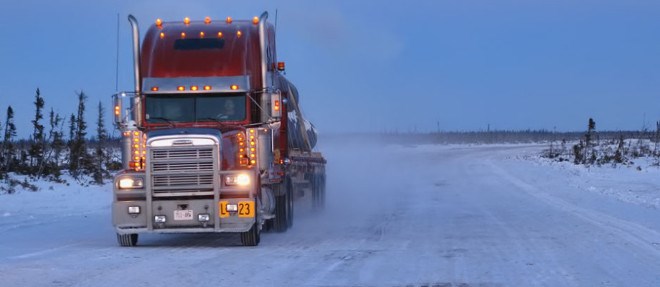The rate of climate change in the Far North may render the winter road network unsafe and uneconomic within a decade, according to a logistics expert.
Barry Prentice, a University of Manitoba professor of Supply Chain Management, responded to recommendations in a draft report of the provincial government’s Northern Ontario Multimodal Transportation Strategy (NOMTS) on the topic of the winter road network.
The draft strategy recommends that winter roads be designed and constructed in such a way as to mitigate the impact of climate change or consider other transportation alternatives.
It also suggests expanding all-season roads in cooperation with government and First Nation communities.
Prentice replied the government needs to “develop a timeline with concrete goals” in any plan on the future of winter roads.
“The tone of the NOMTS chapter on Remote and Far North Challenges could be described as ‘business as usual,’ with recommendations that have no targets for implementation; aspirational statements are insufficient,” wrote Prentice in a Nov. 28 news release.
If the melting polar caps are any indication, the rate of climate change is outpacing the government’s 20-year horizon to implement this plan, he added.
The Northern Policy Institute recruited Prentice to write a commentary as part of a series of articles on the regional transportation strategy.
“The socio-economic conditions in the Far North are already grim because the transportation options are few and current costs of access are so high - a ‘Plan B’ is needed that recognizes the implications of a more rapid climate change process,” said Prentice.
He observes in the past 20 years, the seasonal window to transport goods into these remote communities by truck has been reduced in half.
“If this trend continues,” he wrote, “only a quarter of the winter road season would be left before the NOMTS horizon is completed.”
Prentice predicts a difficult future for the 24,000 residents in Northern Ontario’s remote communities who are reliant on the winter road network for food, fuel, and material.
With gradually shorter winter road seasons, aircraft cannot replace the volume of goods that arrive by truck, and certainly not deliver it cheaply for consumers, he wrote.
To replace the 3,160 kilometres of winter roads with permanent all-season roads is an expensive endeavour.
Based on Prentice’s previous research in making a case for airships in the Far North, he calculates the cost at roughly $3 million per kilometre, or $9.5 billion for the entire network.
That amounts to $392,000 per person living in the Far North.
Prentice said it’s unclear whether Ottawa or Queen’s Park would ever commit so much money to service so few people.
Getting all the government players and First Nation communities on the same page is another challenge.
First Nations are a federal responsibility and Ottawa will be expected to fund a major portion of any infrastructure improvements. Ontario could go it alone but would need the approval of First Nations.
“As part of our role to propose evidence-based, practical solutions that support the sustainable development of Ontario’s northern regions, we’ve put forward this series of action items that outline concrete next steps that the public and private sectors can use to inform the implementation and management of transportation policies over the coming decades,” said NPI president Charles Cirtwill in a statement.




